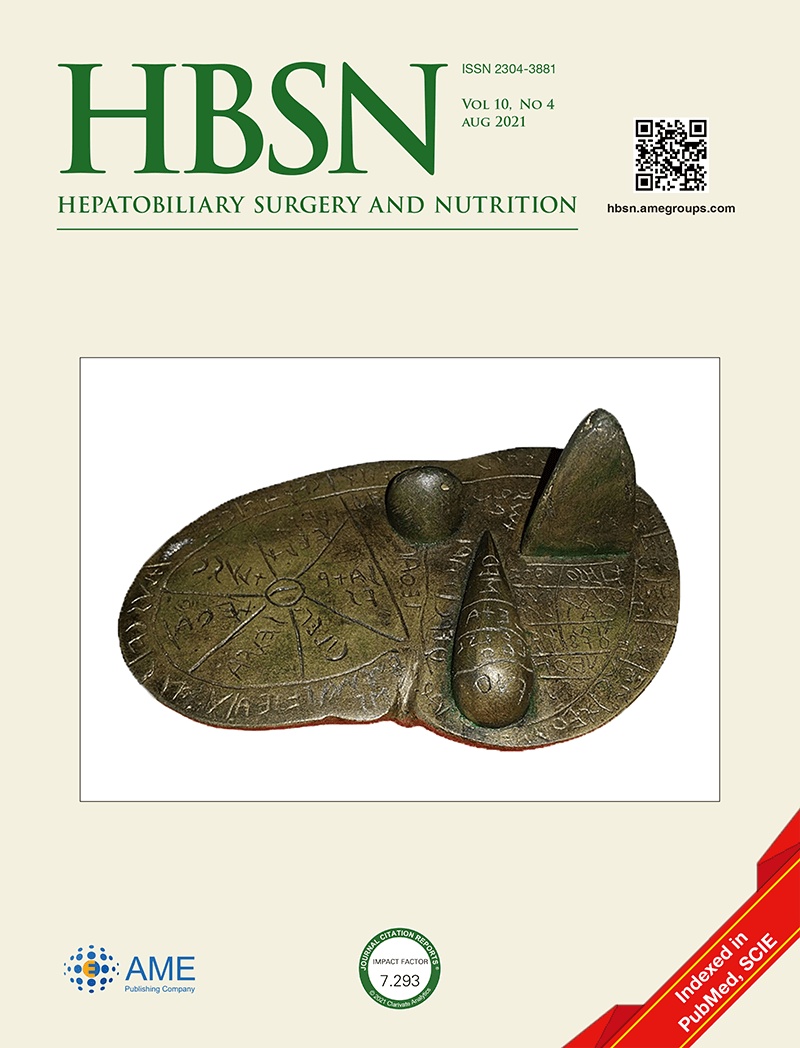The Story Behind the Cover Picture
Original Article
Downstaging and resection of hepatocellular carcinoma in patients with extrahepatic metastases after stereotactic therapy
1. Stereotactic therapy can successfully convert patients with hepatocellular carcinoma of CNLC stage IIIB to resectable status;
2. Systemic therapy combined with locoregional therapy at early time tended to prolong tumor-free survival time;
3. The treatment regimen was safe with no serious AEs occurred, and worth promoting.
2. Systemic therapy combined with locoregional therapy at early time tended to prolong tumor-free survival time;
3. The treatment regimen was safe with no serious AEs occurred, and worth promoting.
A comparative study of pancreas transplantation between type 1 and 2 diabetes mellitus
Type 2 DM is not inferior to Type 1 DM after pancreas transplantation in terms of surgical risks, immunological and endocrine outcomes, and graft survival rates. Pancreas transplantation could be an effective option to treat selected uremic Type 2 DM patients without significant insulin resistance.
High HbA1c is a risk factor for complications after hepatectomy and influences for hepatocellular carcinoma without HBV and HCV infection
Although high HbA1c was not significant prognostic factor in HCC patients with viral hepatitis, it was significant prognostic factor in NBNC patients. This study also revealed that high HbA1c may also be a risk factor for morbidities after hepatectomy.
A combined Cox and logistic model provides accurate predictive performance in estimation of time-dependent probabilities for recurrence of intrahepatic cholangiocarcinoma after resection
This multicenter study demonstrated that the combined Cox and logistic ranking system allows accurate estimation on the risk of recurrence for patients with intrahepatic cholangiocarcinoma after resection. The derived model may be useful in stratifying individuals who sole resection of the tumor may not be curative.
The potential use of extended criteria donors and eligible recipients in liver transplantation for unresectable colorectal liver metastases in Central Sweden
With current selection criteria a small subset of patients with unresectable CRLM could be accepted for LT. The use of extended criteria donors could increase today’s donor pool by 6-18%. This donor pool is sufficient and displays an acceptable risk-benefit ratio for patients with unresectable CRLM.
Use of donor-specific red blood cell transfusions for patients undergoing liver transplantation during the COVID-19 pandemic
This is the first prospective clinical trial that evaluated the effect of DRBCT on DDLT, and our results suggested that DRBCT is a safe and effective procedure to lower the need for blood. Moreover, it reduced the level of postoperative AST to a certain extent.
Modified FOLFIRINOX for unresectable locally advanced or metastatic gallbladder cancer, a comparison with GEMOX regimen
Chemotherapy is the major palliative treatment for advanced GBC. In this study, 44 patients with unresectable locally advanced or metastatic GBC were involved, and the mFOLFIRINOX regimen may improve the PFS and OS compared to the GEMOX regimen, while both regimens have similar rates of adverse events.
French Editorial from the ACHBPT
Editorial
Commentary
Viewpoint
Letter to the Editor


